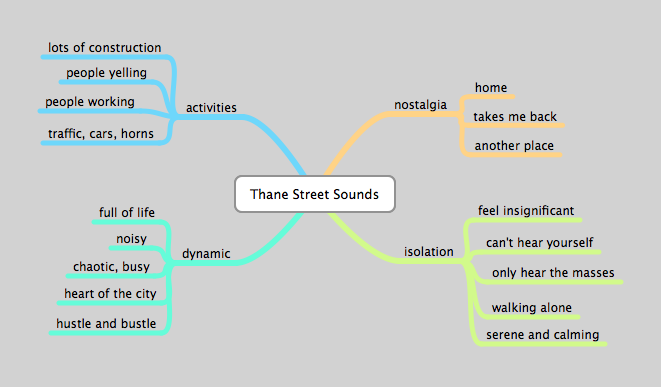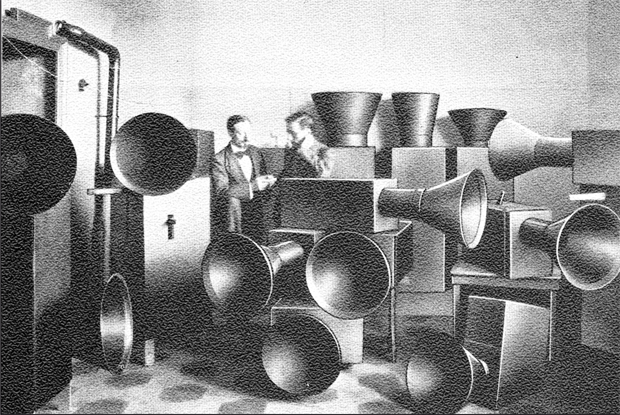Mumbai Noise
I spoke to several people who had never visited India, and collected their reactions to recorded street sounds from Thane. I asked them how the sound made them feel and what it reminded them of.
Noise is 'part of the experience of the urban' (Barry, 2000, p.170). I am interested in how it can be used to transport people to an other place, to create a visual experience with sound alone. In his essay on Noise the author Andrew Barry (2000, p.168) says:
For Russolo, far from seeking to block out this noise, modern composers should listen to it and learn from it. In doing so they should not attempt to produce pure sounds, which were, in his view, 'estranged from life'.
The author states that though during futurist Luigi Russolo's time the modern city was a noisy place, today 'it is increasingly blocked out, dampened down or simply displaced' (Barry, 2000, p.170). It is easy to disagree since in a developing city such as Mumbai we suffer from dangerously high noise levels, a problem that is getting increasingly difficult to contain.
Russolo's futurist manifesto The Art of Noise inspired me to study the topic further. It is fascinating to read his account from 1913, where he literally predicts the rise in popularity of electronica, techno, trance and industrial rock (Russolo, 1967, p.5):
Nowadays musical art aims at the shrilliest, strangest and most dissonant amalgams of sound. Thus we are approaching noise-sound. This revolution of music is paralleled by the increasing proliferation of machinery sharing in human labor. In the pounding atmosphere of great cities as well as in the formerly silent countryside, machines create today such a large number of varied noises that pure sound, with its littleness and its monotony, now fails to arouse any emotion.
[Image Source] ^Russolo's mechanical orchestra.
This lead me to compare the unedited urban Mumbai sounds with Russolo's work with the mechanical orchestra, a relevant example is Risveglio Di Una Città 1913:
It has opened a whole new world in terms of how I can edit raw street sound and the various ways I can integrate it within a space. Using similar fantastical "noise-music" from Mumbai I can create an atmosphere and place that is inherent to the city.
Reference
Ananthakrishnan, G. (2010). Mumbai Diwali Decibel Levels: Cold Comfort. Nov.6th 2010. Digital Journo. [online]. Available from: http://digitaljourno.wordpress.com/2010/11/06/mumbai-diwali-decibel-levels-cold-comfort/ Accessed 14th May 2011.
Barry, A (2000). Noise. In: Pile, S. and Thrift, N. (eds.) City A-Z. London: Routledge.
Naik, Y. and Khera, D. (2011). IIT-B Demands Noise Barriers. Mumbai Mirror. [online]. April 17th 2011. Available from: http://www.mumbaimirror.com/article/2/2011041720110417030951301232b713d/IITB-demands-noise-barriers.html [Accessed: 13th May 2011].
Russolo, L. (1967). The Art of Noise, futurist manifesto 1913. [pdf]. Something Else Press. Available from: http://www.ubu.com/historical/russolo/index.html [Accessed 13th May 2011].
Rebello, S and Lohade. U. (2011). Sound and fury in Mumbai. Hindustan Times Mumbai. [online] April 20, 2011. Available from: http://www.hindustantimes.com/StoryPage/Print/687364.aspx [Accessed 12th May 2011].
Wikipedia (2011). The Art of Noises. Available from: http://en.wikipedia.org/wiki/The_Art_of_Noises [Accessed 13th May 2011].

